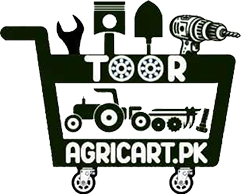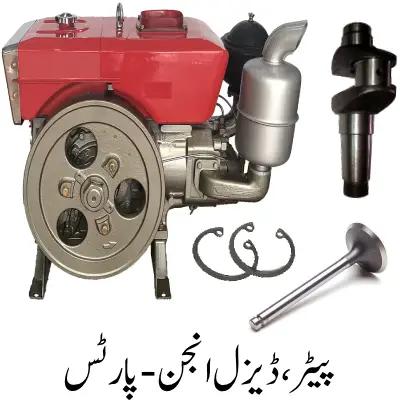Engines: Petrol Engine’s, Diesel Engine’s & Spare Part,s
Engines are mechanical devices designed to convert fuel into mechanical energy, driving vehicles, machinery, and equipment. Among the most common engine types are petrol (gasoline) and diesel engines, each with distinct operating principles, applications, and spare parts.
Petrol Engines
Petrol engines, operate using a spark ignition system. They mix air and petrol in a carburetor or fuel injector, compress the mixture in the cylinder, and ignite it with a spark plug.
Key Features:
High RPMs: Petrol engines are capable of running at higher revolutions per minute, making them suitable for lightweight and high-speed applications.
Smooth Operation: They produce less vibration and noise compared to diesel engines.
Applications: These are Widely used in cars, motorcycles, small boats, and some power tools.
:Advantages: Lower initial cost, Better performance in terms of acceleration.:
Diesel Engines:
Diesel engines rely on compression ignition, where air is compressed to a high pressure and temperature, and fuel is injected into the combustion chamber, igniting on contact.
Key Features:
Fuel Efficiency: Diesel engines are more efficient than petrol engines due to the higher energy content of diesel fuel.
Durability: Built to withstand higher pressures, making them long-lasting and suitable for heavy-duty use.
Applications: Common in trucks, buses, tractors, construction machinery, and ships.
Advantages: Better torque, especially at low RPMs, Longer lifespan with proper maintenance, Lower fuel consumption for heavy loads.
Engine Parts:
Both petrol and diesel engines share several essential parts, though their operation may differ.
Cylinder Block: The main housing of the engine, containing cylinders.
Cylinder Head: Mounted on the cylinder block, it contains valves, spark plugs (in petrol engines), or fuel injectors (in diesel engines).
Pistons: This Moves up and down inside the cylinders, converting energy into mechanical motion.
Crankshaft: Transforms the pistons’ linear motion into rotational motion.
Connecting Rod: Links the piston to the crankshaft, transmitting motion.
Camshaft: Controls the opening and closing of intake and exhaust valves.
Fuel Injector/Carburetor: Delivers fuel to the chamber. it uses injectors for diesel and injectors or carburetors for petrol engines.
Spark Plug (Petrol Engines): Provides the spark needed to ignite the air-fuel mixture.
Air and Fuel Filters: Ensure clean air and fuel enter the engine, that improves efficiency and longevity.
Cooling System: It Includes radiators and water pumps to prevent overheating.
Lubrication System: Delivers oil to reduce friction and wear among moving parts.
انجن: پیٹرول انجن ، ڈیزل انجن اور پرزہ جات:
انجن مکینیکل آلات ہیں جو ایندھن کو مکینیکل توانائی، گاڑیاں چلانے، مشینری اور آلات میں تبدیل کرنے کے لیے بنائے گئے ہیں۔ انجن کی عام اقسام میں پیٹرول اور ڈیزل انجن ہیں، جن میں سے ہرایک کے الگ الگ آپریٹنگ اصول، ایپلی کیشنز اور پرزہ جات ہیں۔
پٹرول انجن: پٹرول انجن چنگاری اگنیشن سسٹم کا استعمال کرتے ہوئے کام کرتے ہیں۔ وہ کاربوریٹر یا فیول انجیکٹر میں ہوا اور پیٹرول کو ملاتے ہیں، سلنڈر میں مرکب کو کمپریس کرتے ہیں، اور اسپارک پلگ سے اسے بھڑکاتے ہیں۔
اہم خصوصیات:
ہائی آر پی ایم: پیٹرول انجن زیادہ ریوولیشن فی منٹ پر چلنے کی صلاحیت رکھتے ہیں، جو انہیں ہلکے وزن اور تیز رفتار ایپلی کیشنز کے لیے موزوں بناتے ہیں۔
ہموار آپریشن: وہ ڈیزل انجنوں کے مقابلے میں کم حرکت اور شور پیدا کرتے ہیں۔
ایپلی کیشنز: یہ کاروں، موٹرسائیکلوں، چھوٹی کشتیوں اور کچھ پاور ٹولز میں بڑے پیمانے پر استعمال ہوتے ہیں۔
فوائد: کم ابتدائی لاگت، پرسکون کام، اورایکسلریشن کے لحاظ سے بہتر کارکردگی۔
ڈیزل انجن: ڈیزل انجن کمپریشن اگنیشن پر انحصار کرتے ہیں، جہاں ہوا کو زیادہ دباؤ اور درجہ حرارت پر کمپریس کیا جاتا ہے، اور ایندھن کو چیمبر میں داخل کیا جاتا ہے، جو ملنے پر جلتا ہے۔
اہم خصوصیات:
ایندھن کی کارکردگی: ڈیزل ایندھن کی زیادہ توانائی کی وجہ سے ڈیزل انجن پیٹرول انجنوں سے زیادہ کارآمد ہیں۔
استحکام: زیادہ دباؤ کو برداشت کرنے کے لیے بنایا گیا ہے، جوانہیں دیرپا اور ہیوی ڈیوٹی کے استعمال کے لیے موزوں بناتا ہے۔
ایپلی کیشنز: ٹرکوں، بسوں، ٹریکٹرز، تعمیراتی مشینری اور جہازوں میں عام ہیں۔
فوائد: بہتر ٹارک، خاص طور پر کم RPMs پر، مناسب دیکھ بھال کے ساتھ طویل عمراوربھاری بوجھ کے لیے ایندھن کا کم خرچ۔
انجن کے حصے: پیٹرول اور ڈیزل دونوں انجنوں کے ضروری پرزے ملتے جلتے ہیں، حالانکہ ان کا کام مختلف ہوسکتا ہے۔
سلنڈربلاک: انجن کی مرکزی جگہ جس میں سلنڈر ہوتے ہیں۔
سلنڈرہیڈ: سلنڈر بلاک پرنصب، اس میں والوز، اسپارک پلگ (پٹرول انجنوں میں) یا فیول انجیکٹر(ڈیزل انجنوں میں) ہوتے ہیں۔
پسٹن: یہ سلنڈر کے اندراوپراور نیچے حرکت کرتا ہے، توانائی کو مکینیکل حرکت میں تبدیل کرتا ہے۔
کرینک شافٹ: پسٹن کی لکیری حرکت کو گردشی حرکت میں تبدیل کرتا ہے۔
کنیکٹنگ راڈ: پسٹن کو کرینک شافٹ سے جوڑتا ہے، حرکت کو منتقل کرتا ہے۔
کیم شافٹ: انٹیک اور ایگزاسٹ والوز کے کھلنے اور بند ہونے کو کنٹرول کرتا ہے۔
فیول انجیکٹر/کاربوریٹر: چیمبر میں ایندھن فراہم کرتا ہے۔ یہ ڈیزل کے لیے انجیکٹر اور پیٹرول انجن کے لیے انجیکٹر یا کاربوریٹر استعمال کرتا ہے۔
اسپارک پلگ (پیٹرول انجن): ہوا کے ایندھن کے مرکب کو بھڑکانے کے لیے درکار چنگاری فراہم کرتا ہے۔
ہوا اور ایندھن کے فلٹرز: اس بات کو یقینی بناتے ہیں کہ صاف ہوا اور ایندھن انجن میں داخل ہو، جو کارکردگی اور لمبی عمر کو بہتر بناتے ہیں۔
کولنگ سسٹم: اس میں ریڈی ایٹرز اور واٹر پمپس شامل ہیں تاکہ زیادہ گرمی کو روکا جا سکے۔
چکنا کرنے کا نظام: رگڑ کو کم کرنے اور حرکت پذیر حصوں کے درمیان پہننے کے لیے تیل فراہم کرتا ہے۔


